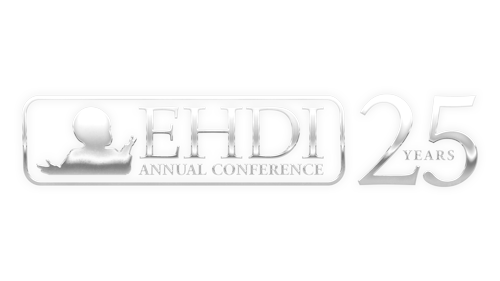2026 Early Hearing Detection & Intervention Conference
March 15-17, 2026 • Jacksonville, FL
3/14/2022 | 12:00 PM - 12:25 PM | What is a Language Access Profile and why should EHDI stakeholders care? | Room 7
What is a Language Access Profile and why should EHDI stakeholders care?
Promoting language development is one of the central goals of the EHDI system and early intervention with children who are deaf or hard-of-hearing (Joint Committee on Infant Hearing, 2019). Because acquisition of any language, spoken or signed, requires access to input in that language, insufficient access to linguistic input (rather than reduced hearing sensitivity) is the primary risk factor for otherwise-preventable adverse outcomes in linguistic, cognitive, and social-emotional development among DHH children. Characterizing DHH children’s early access to linguistic input is therefore a crucial need, both for designing appropriate plans of care and also for improving the evidence basis to support better-informed decision making.
Unfortunately, current practices do not provide information about language input. Therefore, this presentation introduces the concept of “language access profiles” as a new way of conceptualizing DHH children’s experience with language input during infancy and toddlerhood. I also present two new research-based tools that are designed to measure language access profiles in DHH children: the DHH Language Exposure Assessment Tool (D-LEAT) and Language Access Profile Tool (LAPT). As EHDI systems begin to track data about language outcomes, capturing information about language input becomes increasingly crucial. Language access profiles also present helpful opportunities for families and intervention providers to reframe access to language input as the primary developmental need for (most) DHH children, and to evaluate how various intervention strategies aim to meet that need. Ultimately, widespread implementation of language access profiles will allow researchers and public health systems to document the efficacy and effectiveness of various intervention strategies in a way that is not currently possible.
- Explain what a language access profile is at a conceptual level
- Contrast language access profiles with communication mode
- Identify benefits of integrating language access profiles in their capacity as an EHDI stakeholder
Presentation:
This presentation has not yet been uploaded.
Handouts:
Handout is not Available
Transcripts:
CART transcripts are NOT YET available, but will be posted shortly after the conference
Presenters/Authors
Matthew Hall
(Primary Presenter), Temple University, matthall@temple.edu;
The overarching goal of Matt Hall’s research program is to maximize all d/Deaf children’s developmental potential. As an assistant professor of Communication Sciences & Disorders at Temple University, he applies knowledge from cognitive/developmental psychology and linguistics to questions that concern DHH children, their families, the professionals who serve them, and other stakeholders. He is particularly concerned with the paucity of evidence regarding language acquisition and psychological development in DHH children whose hearing parents have chosen to include ASL as part of their child’s access to language. In his reading of the literature, strong and contradictory claims have been made without sufficient empirical support. He is therefore committed to increasing the quality of the empirical evidence so that clinicians and families can make better-informed decisions.
ASHA DISCLOSURE:
Financial -
• Receives Grants for Independent contractor from NIH/NIDCD.
Nonfinancial -
No relevant nonfinancial relationship exists.
AAA DISCLOSURE:
Financial -
No relevant financial relationship exists.
Nonfinancial -
No relevant nonfinancial relationship exists.
